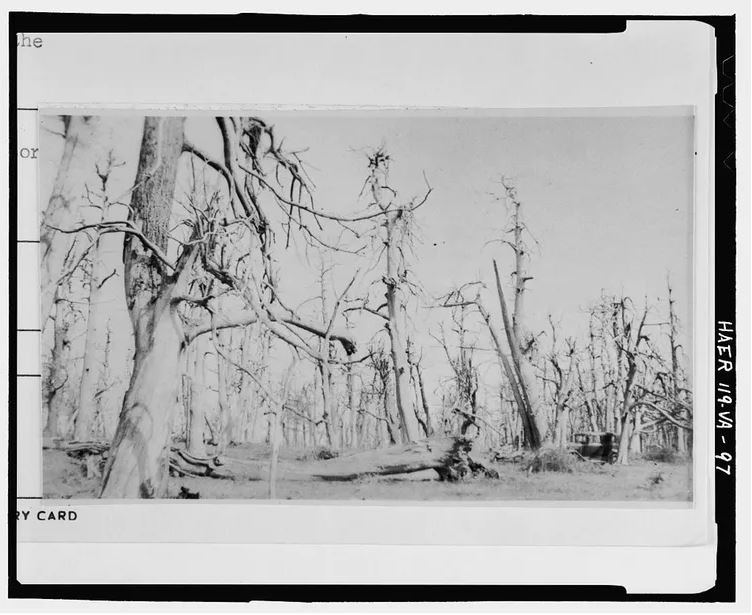But after 28 years of research, an academic group solved the problem using a gene found in grains, strawberries, etc. It is completely harmless but prevents the tree from developing sores. It is nature fixing nature.
Yet because it is also manual genetic engineering rather than random cosmic rays causing mutations, $2 billion in environmental groups are in automatic opposition, and because this is not a corporate effort, those NGOs are using their highly-paid lawyers to try and block its approval, the way they have with Golden Rice. USDA is considering removing it from the regulatory process because data show it cannot have off-target effects and that is what should be done to prevent activists from keeping these trees out of forests.

A ghost forest of decimated chestnut trees. Thanks, nature. Image: Library of Congress.
My comment to USDA recommended this be granted non-regulated status is below. If you'd like to leave your own comment, go here. If you need more information, go here first.
Docket No. APHIS-2020-0030,
Regulatory Analysis and Development, PPD, APHIS,
Station 3A-03.8, 4700 River Road Unit 118,
Riverdale, MD 20737-1238.
State University of New York College of Environmental Science and Forestry; Petition for Determination of Nonregulated Status for Blight-Resistant Darling 58 American Chestnut
In the Wall Street Journal, I noted that it was now time to move past GMOs just for food and embrace the future of Genetically Rescued Organisms: Species that have been decimated by natural pests and that chemicals and older methods like manual breeding have been unable to save. One example is the American Chestnut tree, where 4,000,000,000 were lost due to blight, the Cryphonectria parasitic fungus.
Genetic engineering can essentially give these at-risk plants a vaccine and this is a non-patented, blight-resistant American chestnut tree that simply uses a gene from bread wheat which produces an enzyme which keeps the fungus from forming cankers. The enzyme is not just in grain crops, it's in bananas, strawberries, and many other foods billions of people have eaten without issue.
Therefore this product should be granted non-regulated status, just as those other plants have received, and we can get a beautiful hardwood back into existence along the eastern seaboard.
Hank Campbell
Science 2.0



Comments